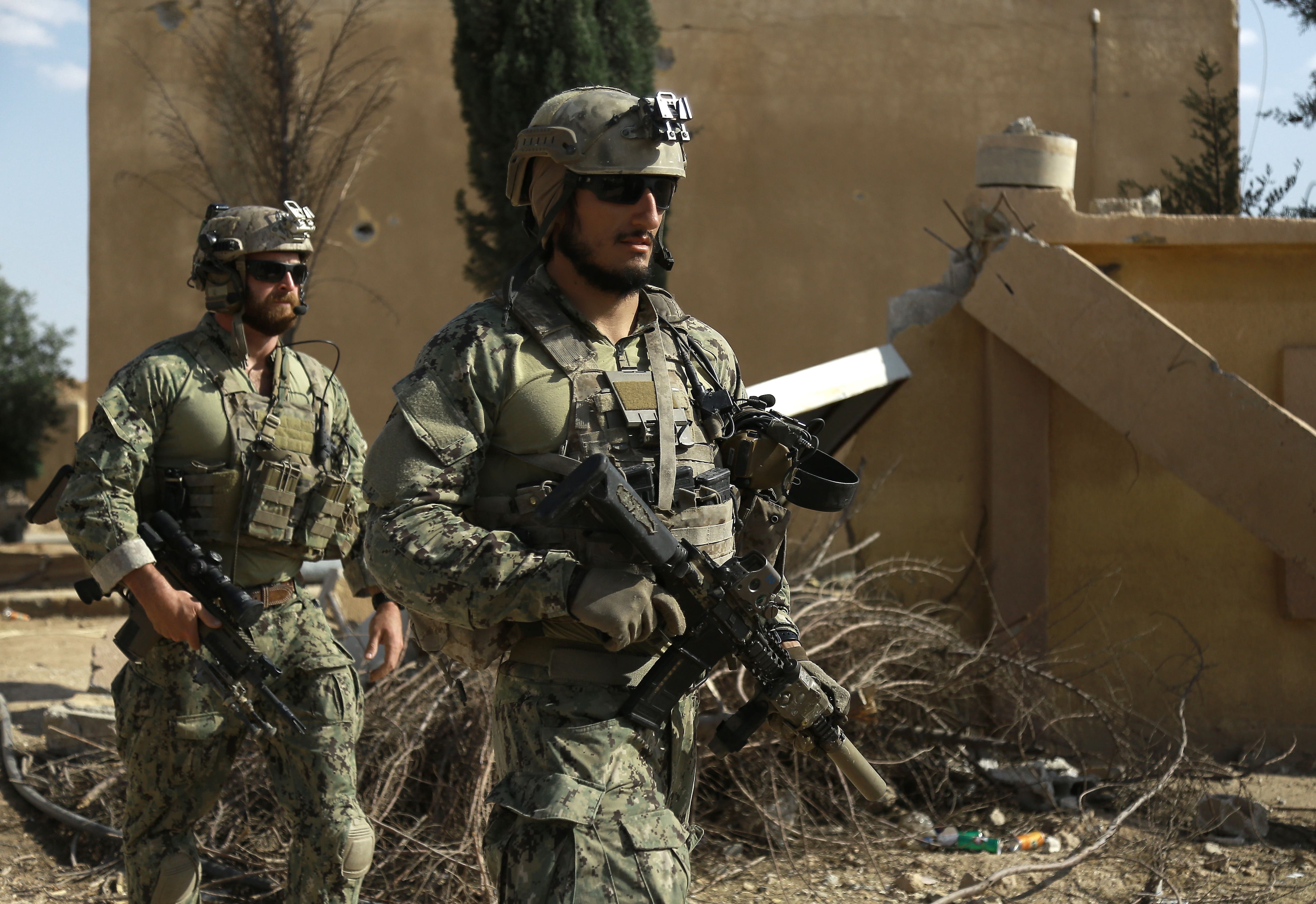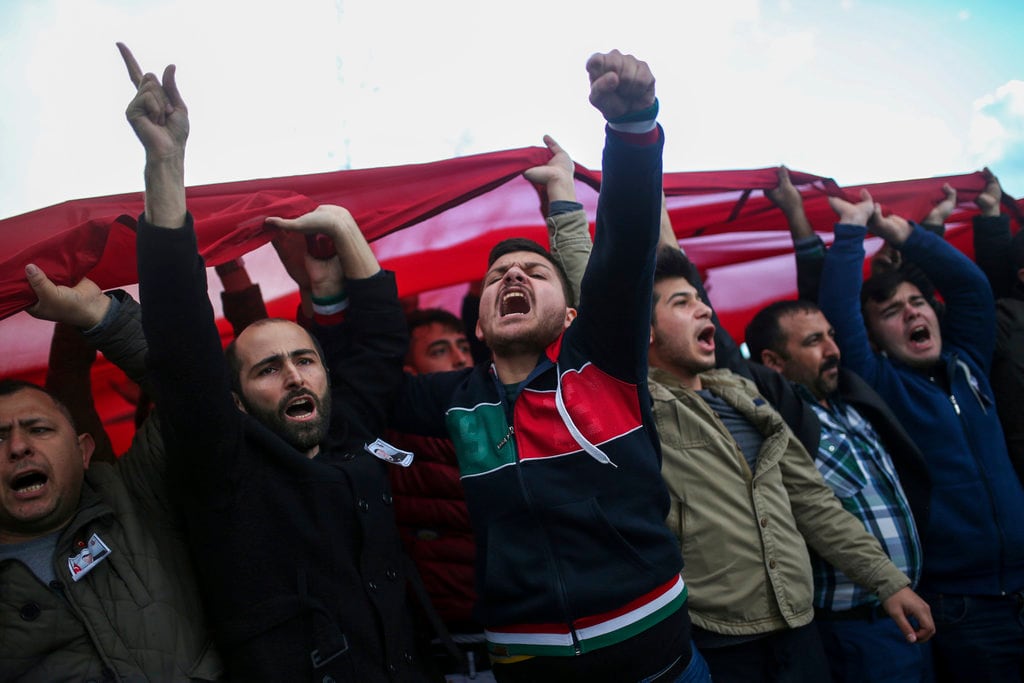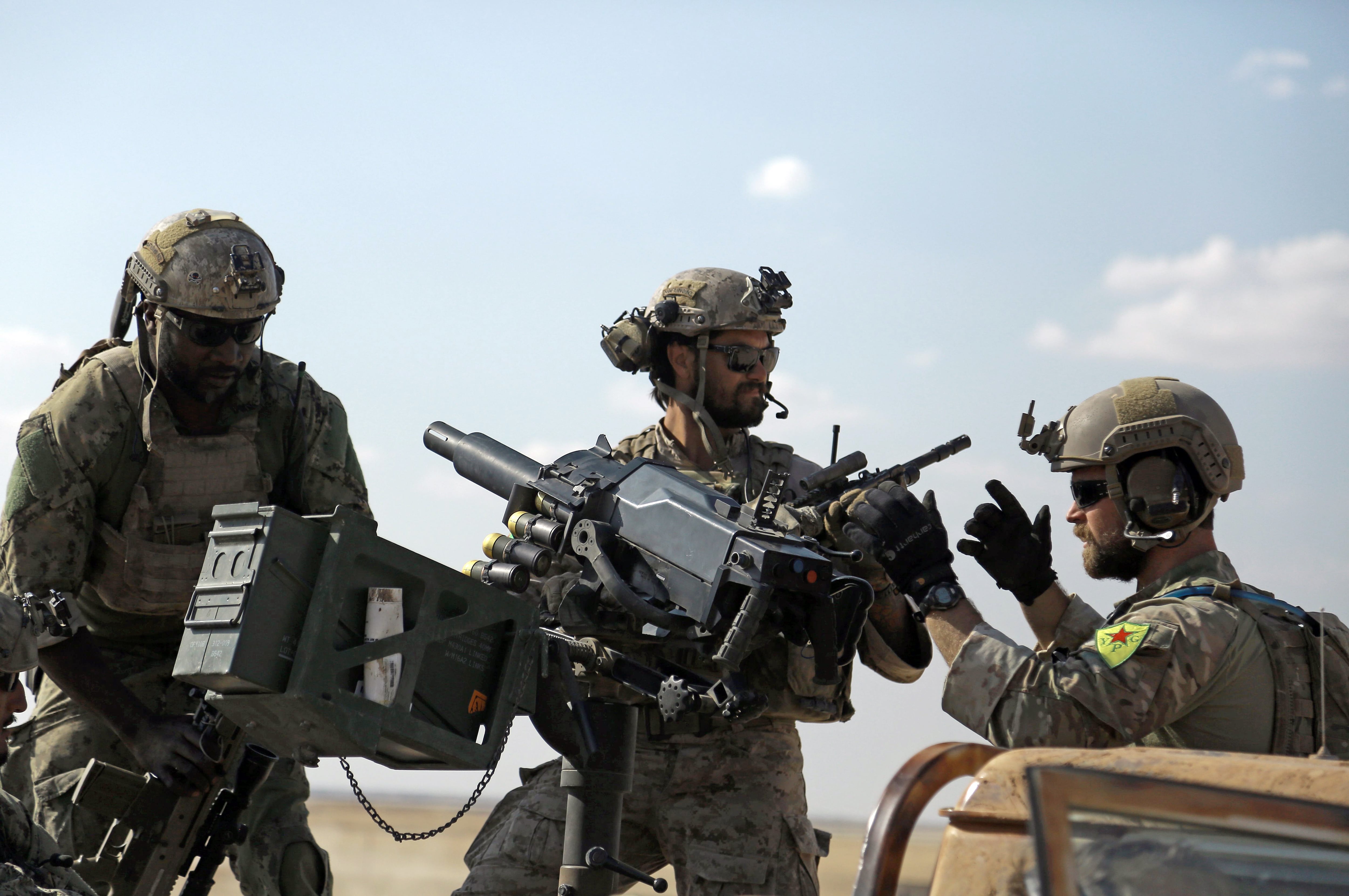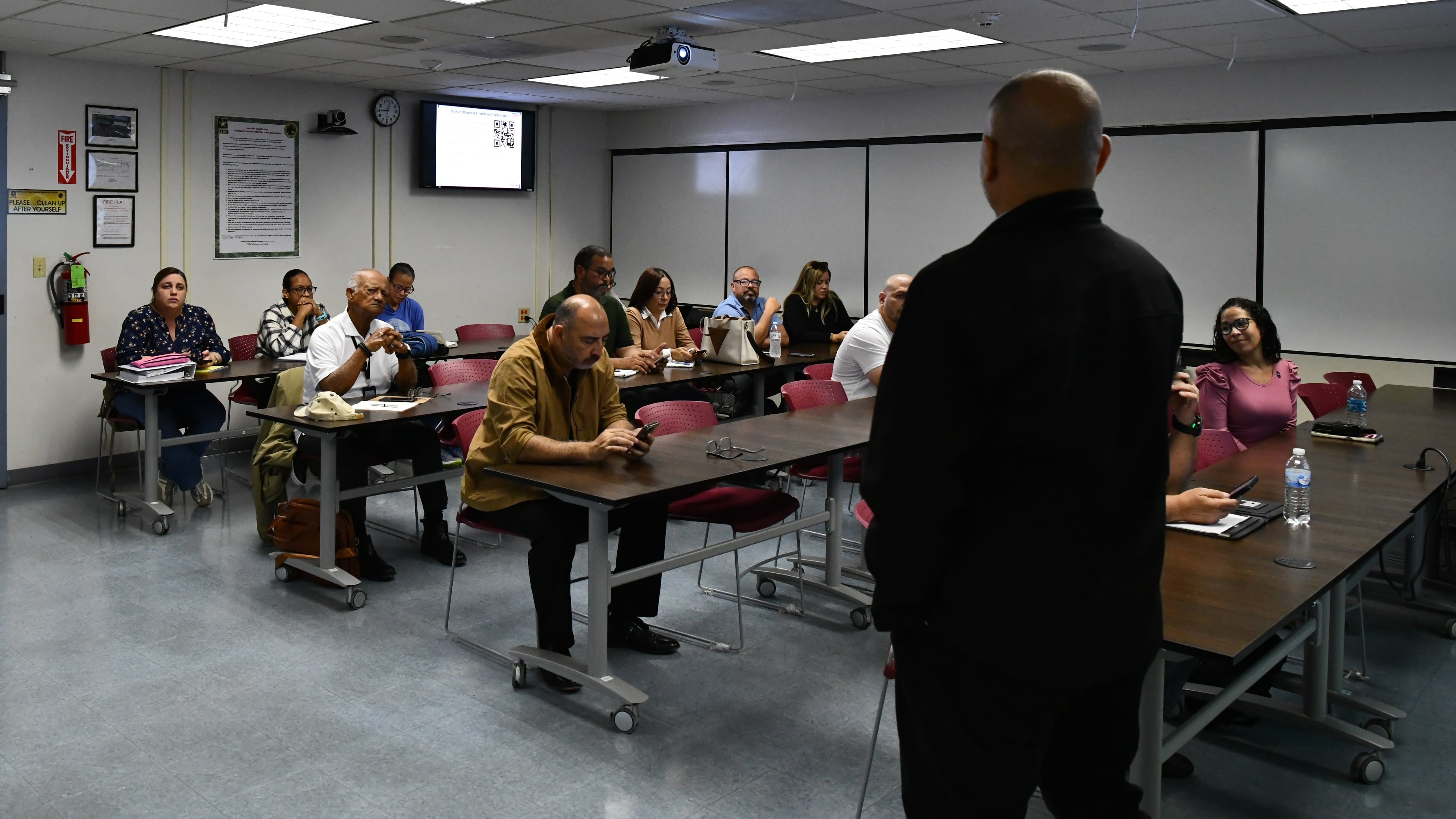For the second time in less than a week, U.S. special operations forces in eastern Syria came under attack from pro-regime forces loyal to Syrian President Bashar al-Assad.
The service members, acting as coalition advisers to the Syrian Democratic Forces, called in an airstrike with an MQ-9 Reaper to destroy a Soviet-made T-72 battle tank on Saturday.
“We detected and saw a tank that took a shot at us,” Lt. Gen. Jeffrey Harrigian, commander of U.S. Air Forces Central Command, told reporters at the Pentagon Tuesday.
“It continued to move, so we again executed self-defense rules of engagement to protect ourselves. And I believe, again, that’s something we always have the right to do and will make sure we’re in a position to do,” Harrigian added.

Although no U.S. or partner forces were injured, three individuals inside the tank were reported to have been killed.
At the time of the attack, Harrigian said, coalition forces were operating from a “defensive position,” conducting what he described as “normal operations in terms of getting back after ISIS and ensuring our area was secure.”
Harrigian would not rule out reports that Russian forces were piloting the tank, or participated in the battalion-sized assault repelled by U.S. airstrikes last week.
“I don’t know who was driving it. ... I’m not just going to speculate on that,” he said.
However, the composition of the forces wasn’t the main concern for Harrigian, who said that the basis of the Reaper strike was self-defense above all else.
The decision to strike rested with the ground force commander of the U.S. forces on scene, Harrigian explained.
“The tank that fired was within an effective range to target our SDF and [coalition] advisers on the ground, which clearly provides him the ability to defend himself,” he said.
RELATED

The tank strike comes on the heels of a flurry of airstrikes late Wednesday and early Thursday that targeted pro-regime fighters assaulting U.S. forces eight kilometers east of the Euphrates River de-confliction line in Khusham, Syria.
The pro-regime forces began the attack with 122mm artillery pieces, before maneuvering T-55 and T-72 battle tanks against an SDF headquarters, according to Col. Thomas Veale, a spokesman for the Inherent Resolve coalition.
An approximately battalion-sized dismounted formation followed the tanks, he added.
“We suspect Syrian pro-regime forces were attempting to seize terrain SDF had liberated from Daesh in September 2017,” Veale said. “[Pro-regime forces] were likely seeking to seize oil fields in Khusham that had been a major source of revenue for Daesh from 2014 to 2017.”

Joint terminal attack controllers on the ground called in close air support during that incident, killing roughly 100 pro-regime fighters.
“That number, to my knowledge, has not changed,” Harrigian reiterated during the Pentagon briefing.
During both incidents, coalition forces maintained regular contact with their Russian counterparts to avoid misperceptions that could endanger each other's forces or escalate tensions, Harrigian added.
In a region awash with state and non-state actors, Harrigian did note that the Russians have started refocusing their efforts in Syria’s northwest, migrating away from the Euphrates River Valley where the U.S.-led coalition continues to focus on ISIS.
“Our interactions with them, in comparison to what we have seen two months ago, has significantly decreased,” Harrigian said. “With that in mind, my assessment is, given where they are now focused, that has allowed us to stay fully concentrated, as you’ve seen over the last few months, on the defeat ISIS operation.”
The U.S. airstrike against the T-72 tank took place the same day an Iranian drone was shot down over Israel, followed by Israeli airstrikes into Syria against Iranian and pro-regime targets. An Israeli F-16 was shot down during that mission.
Harrigian said that the U.S. strike against the tank was not related to the Israeli incident, though.
Kyle Rempfer was an editor and reporter who has covered combat operations, criminal cases, foreign military assistance and training accidents. Before entering journalism, Kyle served in U.S. Air Force Special Tactics and deployed in 2014 to Paktika Province, Afghanistan, and Baghdad, Iraq.




